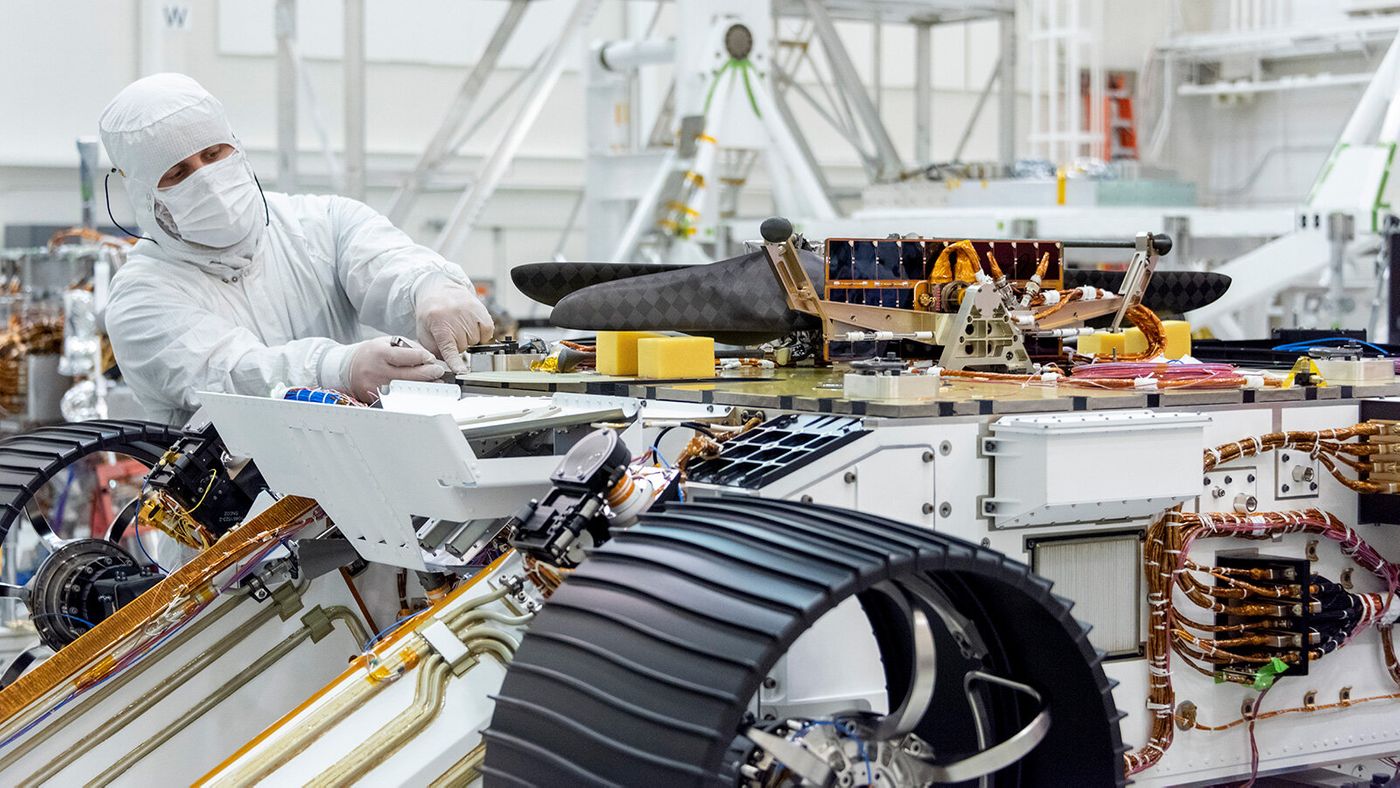Martian Helicopter Attached to the Mars 2020 Rover Chassis
It seems like this past week was a particularly productive one for the team over at NASA. Not only were the two halves of the James Webb Space Telescope (JWST) mated together for the very first time since the project’s conception, but it also appears that NASA engineers have made significant progress on the Mars 2020 mission, which is poised to launch sometime next year to explore on its journey to Mars.
Image Credit: NASA/JPL-Caltech
The Mars 2020 rover, along with the fully autonomous drone-like helicopter that NASA plans to send to the red planet with it, are currently residing at the High Bay 1 clean room situated at the American space agency’s Jet Propulsion Laboratory in Pasadena, California. But that’s not all; it appears that NASA engineers have attached the small aircraft to the Mars 2020 rover’s car-sized chassis.
Related: The Mars 2020 rover will sport 20/20 vision
Citing an official statement regarding this achievement, engineers purportedly set the autonomous helicopter on a specialized plate that resides on the rover’s underbelly. A cover will be installed over the plate and the helicopter to protect the helicopter from dust and heat as the Mars 2020 descends from the Martian atmosphere and lands on the red planet’s sandy terrain.
"With this joining of two great spacecraft, I can say definitively that all the pieces are in place for a historic mission of exploration," commented Thomas Zurbuchen, the associate administrator of the Science Mission Directorate at NASA. "Together, Mars 2020 and the Mars Helicopter will help define the future of science and exploration of the Red Planet for decades to come."
Related: An inside look at the progress that's being made on the Mars 2020 mission
NASA employed this dual-rotor and solar-powered flight vehicle to explore the ‘hard-to-reach’ places on Mars and assist the Mars 2020 rover in finding captivating places to explore. The little flying vehicle will carry a camera, but it won’t have any science instruments onboard because it will be the first vehicle to conduct powered flight on another planet besides Earth and is very much a proof of concept in addition to an aide for the Mars 2020 rover.
The Mars 2020 mission is expected to take flight next Summer, in July 2020, and it should arrive at Mars the following year, on February 18, 2021. NASA has specifically chosen Jezero Crater as the mission’s landing site, but it will likely venture far away from this location as it conducts its long-term service life.
Source: NASA JPL









